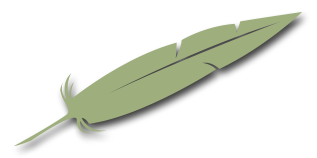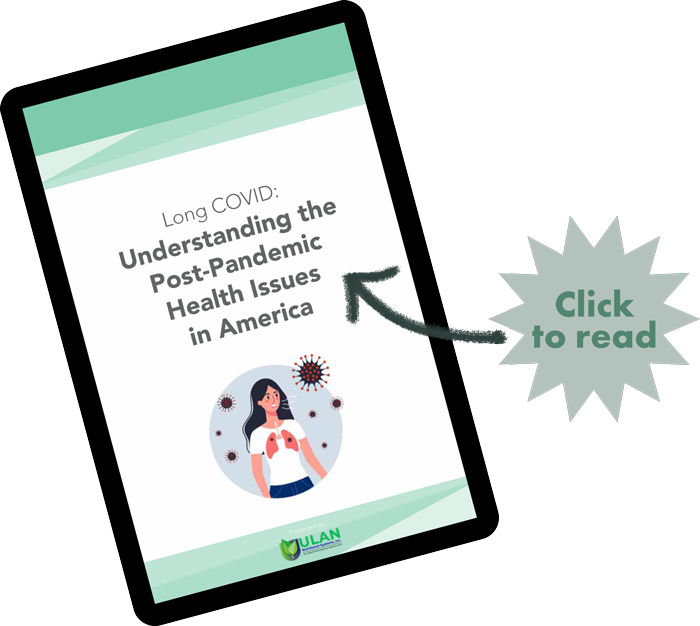- WE MOVED !!!
-
 Professional Acupuncture & Physical Therapy1118 East Superior Street
Professional Acupuncture & Physical Therapy1118 East Superior Street
Duluth, MN 55802(218) 724-3400 Clinic Hours
Mon8:00 am - 4:30 pmTue1:45 pm - 4:30 pmWed8:00 am - 4:30 pmThu8:00 am - 4:30 pmFriCLOSED

- Long Covid Booklet
Blog
4 Tips for an energizing, joyful summer

In Traditional Chinese Medicine, each season is associated with one of the elements: wood, fire, earth, metal and water. Perhaps unsurprisingly, summertime is associated with the element fire. Fire represents maximum activity. In nature, everything is at its peak growth during the summer, so TCM sees our energy as its most active and exuberant. Summer is the time of year with the most yang energy, which is all about excitement and assertiveness.
Summertime is also associated with the heart and small intestine, according to TCM. When the fire element is in balance, the heart is effectively circulating blood and ensuring the beginning of the digestive process in the small intestine is working. From an emotional standpoint, a balanced fire element looks like confident self expression, gentle sensitivity and a strong heart and mind connection.
TCM suggests that summer is the time when our fire and yang energies are most likely to be in balance, because of what is happening in nature. However, it’s also really easy to get overextended, quite literally overheated and energetically burn out by September. Summer can be a very busy season, full of outdoor adventures, vacations and social commitments on top of our regular obligations.
Here are 4 tips to maintain balance in your fire element this summer.
Adjust your sleep schedule. TCM suggests realigning your sleep schedule as the season changes will help you have the most energy throughout your day. In the summer, take advantage of the long days by getting up early, going to sleep later and taking a rest in the middle, hottest part of the day.
Be conscious of your priorities. At the beginning of summer, write down your four top priorities for this summer, so you can come back to them all season long as you find yourself pulled in many directions. These might be reading, spending time with family, swimming and cooking. Or something totally different. Whatever they are for you, mindfully choosing four priorities is a great way to stay grounded through all the activity.
Balance your exercise with breath. Summer is the highest energy, highest movement time of year, including in terms of moving your body. TCM suggests getting a lot of exercise during the summertime. Along with running, biking, swimming, hiking or whatever your summer activity of choice is, incorporate some slower, more mindful movement to stay strong and healthy. Practicing yin or restorative yoga or choosing to meditate in stillness outside can be great for staying in tune with your bodies needs and cultivating mindfulness in all your activities.
Stay hydrated. The opposing element to fire is water, and addressing its implications is an important part of staying balanced during summer. Especially if you live somewhere very hot in the summer, it is very important to drink plenty of water each day. Whether the climate is humid or dry, drinking enough water is very important. Staying hydrated helps your energy levels and assists in digestion. TCM also recommends watermelon juice for cooling the body and cleansing the system.
Research Update – Acupuncture and the Heart

A study published by the National Institutes of Health looked at the prevalence of acute myocardial infarction, or heart attacks, on participants that received acupuncture treatments compared with those who did not. The group of participants that were selected to receive acupuncture went through at least one acupuncture treatment course (six sessions). The results showed those receiving the acupuncture treatment series were less likely to experience a heart attack. And the more treatment sessions, the less likely a heart attack would occur. This study shows regular acupuncture treatments can indeed be helpful at preventing heart attacks.
Traditional Chinese Medicine (TCM), just like Western medicine, believes the heart is responsible for the circulation of blood. When the heart is strong, circulation will be sufficient, the body will be well nourished and the pulse will reflect that by being full and regular. Both medical systems agree a weak heart can manifest as palpitations, chest pain and even heart disease or a heart attack. Where the two medical systems diverge is this: Traditional Chinese Medicine also acknowledges that the heart “houses the mind.”
In TCM, the heart and the mind are virtually inseparable. The heart governs the ability to think clearly, sleep soundly and maintain a good memory. Our emotional state is strongly influenced by how healthy or unhealthy our heart may be. A weak and deficient heart may create feelings of anxiety and mania, while also contributing to insomnia, forgetfulness and lack of concentration. Conversely, a weak mind or uncontrolled emotions can lead to a sick heart.
Regular acupuncture treatments have been found to be very helpful in lowering blood pressure. The needles stimulate the release of opioids, which then decrease the heart’s activity and its need for oxygen. This in turn helps lower blood pressure. Acupuncture also decreases the resting heart rate and blood pressure by helping to decrease stress levels.
Unmanaged, chronic stress can lead to heart disease, high blood pressure, heart arrhythmias and even heart attacks. Numerous studies have shown that stress can be managed through the use of acupuncture. TCM offers more than just acupuncture to treat stress, though. Herbal formulas and exercises like tai chi and qi gong are all wonderful tools for managing stress and keeping the heart healthy.
Poor sleep and insomnia have been linked to heart failure, heart attacks, high blood pressure and strokes too. TCM can help treat a wide array of sleep problems without the harsh side effects of many pharmaceuticals. When a person is rested, their heart will generally be healthier.
Without a healthy heart, the body cannot function properly and the mind may be clouded and disconnected. Contact us to see how TCM can assist you with all of your heart health needs.
SOURCE:https://www.ncbi.nlm.nih.gov/pmc/articles/PMC5381414/
https://www.healthcmi.com/Acupuncture-Continuing-Education-News/1886-acupuncture-prevents-heart-damage-confirmed?fbclid=IwAR2n8K4PA7pIQIM_eUPEwCYgxFEHb-HztbXIwcw6mzNYRnZGE7DCpJUzo20
Healthy eating from early to late summer

Traditional Chinese Medicine or TCM is all about balance. In this ancient system, the key to health is to move through the world in such a way that our bodies can remain in homeostasis, in balance. This idea connects to sleep patterns, what we eat and ultimately the flow of Qi, or energy, throughout the body. For that reason, healthy eating in summertime, according to TCM, is all about using cooling foods to balance out how hot it is outside. In other words, we can find homeostasis from the inside out.
With that in mind, here are a few suggestions for healthy foods to keep you cool and active all summer long.
Fresh fruits like watermelons, strawberries, tomatoes and pear are cooling and have strong yin energy. Summer meals should be predominately fresh fruits or vegetables, according to TCM. These food groups have the strongest yin energy, balancing out the fierce yang and fire energies of summer.
Fresh vegetables that are in season in your region are also a great choice, especially cooling vegetables like cucumbers, spinach, lettuce, peppers, celery, raddish, carrots and cauliflower. Vegetables have the second highest yin energy, according to TCM.
Summer herbs like basil, cilantro, parsley and mint are a great, healthy addition to most recipes. These herbs are also natural diuretics and heavy-metal detoxifiers, which flush excess waste from the body.
The best foods to eat vary with geography. If you live in a place where summer days are long, but not very hot and the nights get really cool, incorporate more neutral or even warming fruits and vegetables into your summer smorgasbord. These fruits and vegetables can include most varieties of squash, especially pumpkin, butternut and acorn squash, lentils and legumes, whole grains like brown rice and root vegetables like beets, potatoes and parsnips.
In places with cooler summers, or during late summer, the fifth season according to TCM, diet is about prioritizing self-nourishment so it can be utilized as energy. Late summer is the time to choose smart sugars that won’t clog up the spleen pathway, including apples, carrots, dates, figs, grapes, peaches, pears, sweet potatoes and squash. These smart sugars also regulate the body’s blood sugar, which decreases the strain on the pancreas.
For those whose summer climate is hot, here is a recipe for a cooling, detoxifying water you can drink all summer long to keep yourself in balance.
Cooling detox water:
- 1 lemon
- 1 lime
- ½ cucumber
- 16oz. Water
- Bunch of fresh mint
Slice the lemon, lime and cucumber and add to the water. Stir in the mint. Let it sit in the fridge overnight and enjoy chilled.
Research Update: Acupuncture for Low Back Pain

A study published in the British Medical Journal examined how acupuncture can be beneficial for low back pain. The researchers split 241 people into two groups. One group received acupuncture treatments and the other group only received conventional treatments for pain. Over the course of the two-year study, researchers found that those participants receiving acupuncture reported their pain levels were less and that they needed less medication. While the differences in pain scores were not astronomical, this study does demonstrate that the addition of acupuncture to conventional treatments for low back pain can be helpful.
Statistics show that almost eight out of ten people will experience low back pain at some point during their life. Seeking medical treatment for back pain is very common. Typically back pain is fleeting and can be easily resolved with rest, heat and an occasional anti-inflammatory like ibuprofen. However, once the damage is done, the recurrence of back pain can be as high as 50 percent. Part of this is because as we age, things like muscles and tendons become less flexible and pliable. It is also very well known that in the United States people are too sedentary, and this leads to excess weight gain that can create added pressure on the body, especially the low back.
Traditional Chinese Medicine (TCM) is a medical system that dates back nearly 3,000 years. Despite its age, TCM has a lot of validity to offer in the age of modern medicine. Thousands of studies have proven that acupuncture, just one of the modalities used in TCM, can be very beneficial in the treatment of low back pain.
Acupuncture uses hair-thin needles to stimulate specific pressure points on the body. By invigorating these points, the brain is triggered to release endorphins, which are natural painkillers. The energy within the body is also moved and adjusted. According to TCM medical theory, when the energy is blocked or weak, then pain and illness can attack the body.
 One of the advantages of utilizing acupuncture to treat low back pain is that the acupuncturist doesn’t need to diagnose the cause of the pain before treating it. Since acupuncture has no real adverse side effects when performed by a qualified and professionally licensed practitioner, pain relief can begin the very first time a patient is treated.
One of the advantages of utilizing acupuncture to treat low back pain is that the acupuncturist doesn’t need to diagnose the cause of the pain before treating it. Since acupuncture has no real adverse side effects when performed by a qualified and professionally licensed practitioner, pain relief can begin the very first time a patient is treated.
The treatments are very customizable because this medicine is not a “one size fits all” type of solution. This means that as the pain shifts and changes, the patient will receive customized treatments that not only address the pain and inflammation, but they also work on resolving the root of the problem. Most patients who are dealing with pain also have added stress, insomnia and depression or anxiety. Acupuncture is great at treating all of these conditions. So the patient gets more than just pain relief.
Acupuncture is so effective at treating and relieving pain that it is now showing up in hospitals and emergency rooms. In fact, Abbott Northwestern Hospital in Minneapolis, Minnesota is now successfully using acupuncture in its emergency room to treat conditions ranging from low back pain to car accident injuries to kidney stones. Their initial results show that pain scores are just as low with acupuncture as they are with analgesic painkillers. Another positive action regarding the utilization of acupuncture came just recently. The Food and Drug Administration released proposed changes that plan to educate health care providers about treating pain. The new guidelines recommend that doctors get information about acupuncture and suggest it to their patients before prescribing opioids.
With these kinds of recommendations and testimonials, it is hard to believe that only about ten percent of Americans have ever tried acupuncture. But that statistic is slowly changing as more and more people are seeking natural and alternative methods of dealing with low back pain. Why not check it out for yourself? Contact us today.
SOURCE: https://www.sciencedaily.com/releases/2006/09/060915102553.htm
Extraordinary Vessels – Chong Mai

Most acupuncture points are located on the 12 primary channels that flow along the surface of the body. However, there are eight Extraordinary Vessels that flow more deeply in the body, and are perhaps even more powerful that the 12 primary channels. The Extraordinary Vessels regulate the 12 channels, and are deep lakes of energy, which can feed the 12 primary channels when they are depleted.
Chong Mai is one of the most important Extraordinary Vessels, and some texts place it as the nexus of the whole Extraordinary Vessel network. It has numerous branches throughout the body and has even more physiological and energetic functions.
The Chong Mai, also called the Penetrating Vessel, originates in the space between the kidneys, along with Extraordinary Vessels Du Mai (Governing Vessel) and Ren Mai (Directing Vessel or Conception Vessel). Its internal branch descends through the uterus and emerges in the perineum. Its descending branch flows down the inner leg to the medial foot and big toe. Meanwhile, its abdominal branch flows upward through the abdomen, following the kidney meridian, and spreads out throughout the abdomen and chest. The head branch further extends through the throat, chin and eyes. While the spinal branch flows along with the Du Mai up the spine.
Based on its pathways alone, it is easy to see why the Chong Mai is such a powerful vessel, as it covers so many areas of the body and touches so many of the 12 primary meridians and organs.
The Chong Mai is called the “Sea of Blood,” making it incredibly important in treating gynecological conditions. It is said to transform kidney essence into menstrual blood, and plays a key role in maintaining healthy menstruation. Particularly concerned with adequate movement of blood throughout the body, it can be used to treat any sort of blood stasis pattern, including certain gynecological, circulatory, musculoskeletal and hormonal pathologies. The Chong Mai is particularly linked to heart blood, through its action of dispersing through the chest. Therefore, the Chong Mai is related to heart rhythm, cardiac function and emotional issues such as anxiety and panic attacks (as the spirit resides in the heart blood, from a Traditional Chinese Medicine perspective.)
Chong Mai helps to keep energy and blood moving throughout the whole body – when there is stagnation or pain, the Chong Mai isn’t functioning optimally. By maintaining flow throughout the primary channels, the Chong Mai also is closely tied to the correct directional flow of energy in each system. The Chong Mai also has a close relationship with the stomach, so for nausea as well as other stomach symptoms, treating the Chong Mai can help.
The Chong Mai doesn’t have any points that lie on it directly – rather, it is opened through certain points on the wrists and feet. The Chong Mai can thus be stimulated with acupuncture, but also with Chinese herbal medicine and techniques to direct energy such as Tai Chi and qi gong.
